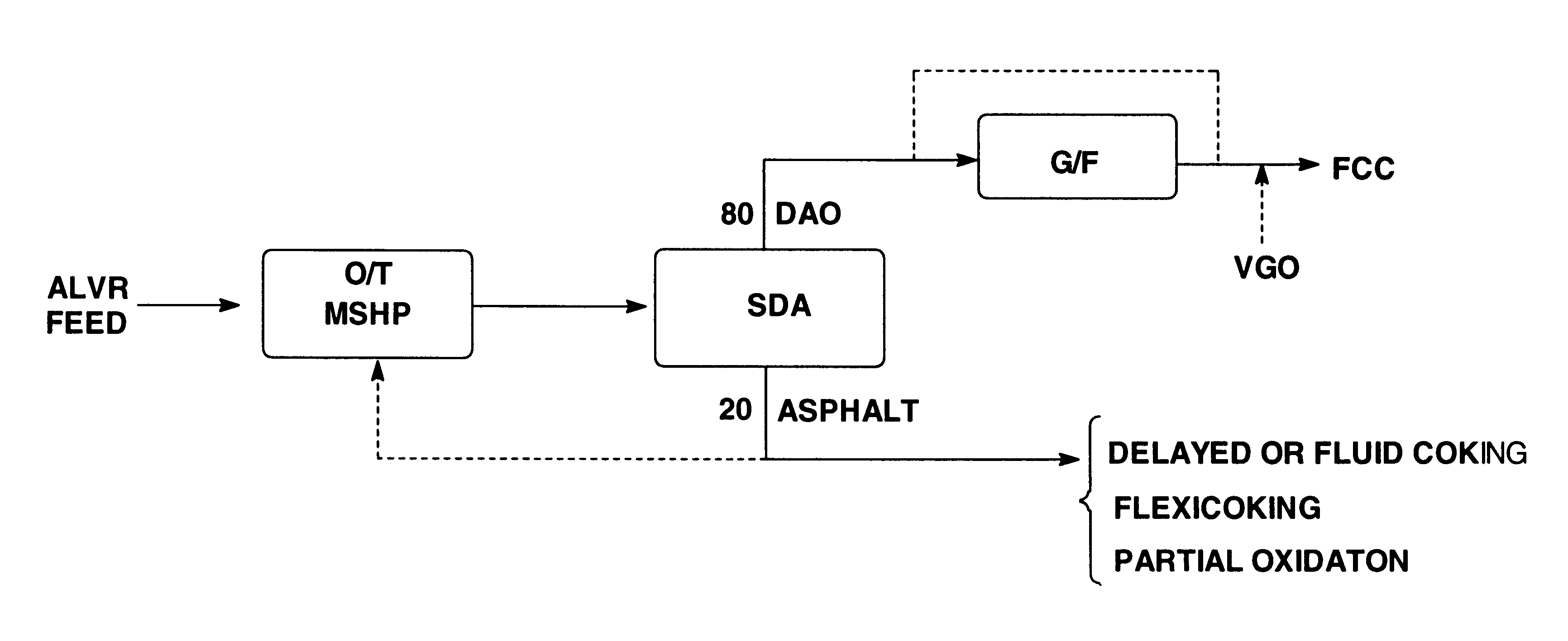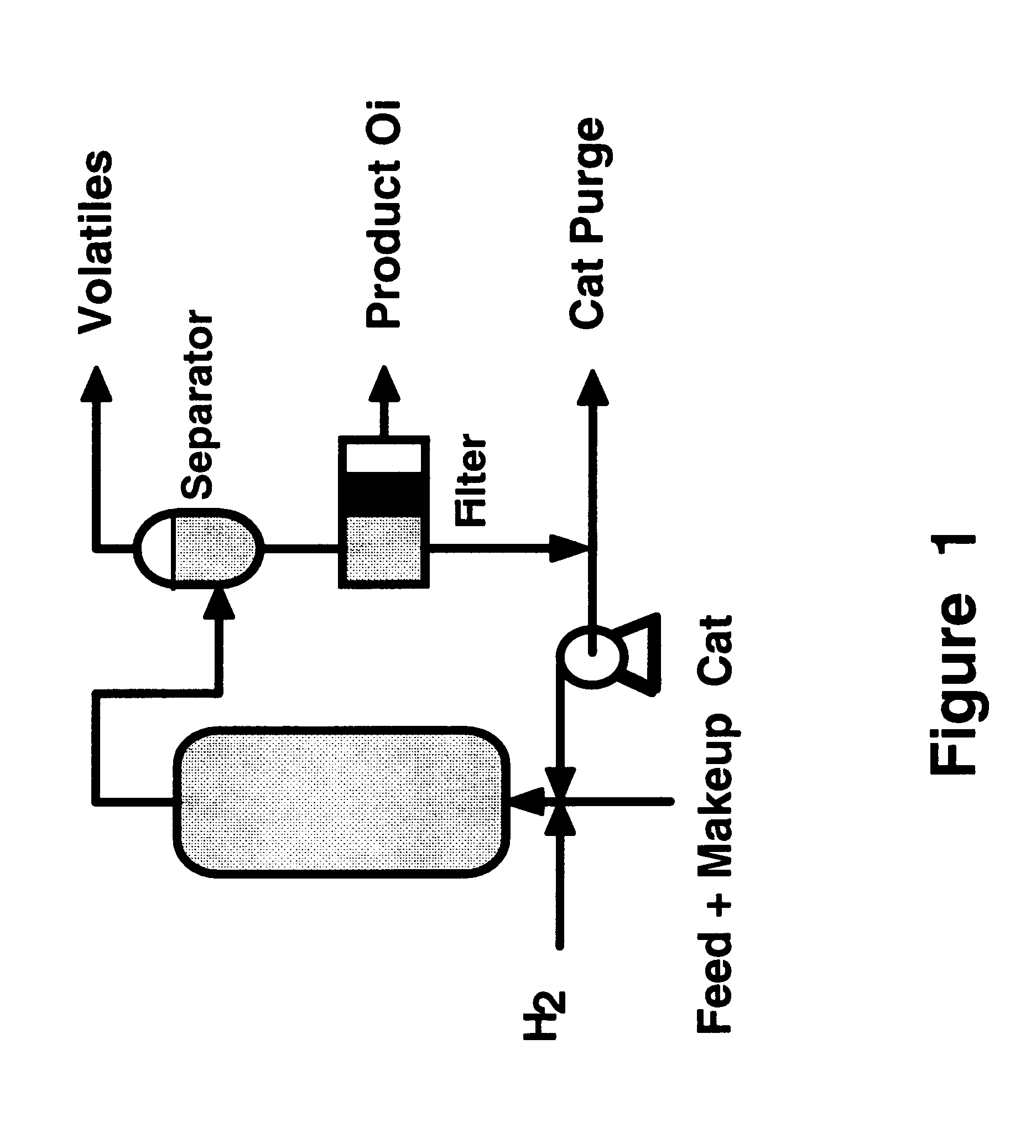Heavy oil upgrading process (LAW813)
- Summary
- Abstract
- Description
- Claims
- Application Information
AI Technical Summary
Benefits of technology
Problems solved by technology
Method used
Image
Examples
example 2
MSHP Procedure
A typical hydrotreating procedure involved charging an autoclave with 70 g of residuum, and the appropriate amount of PMA / ALAR catalyst, chosen on the basis of wt % metal on feed. The autoclave was flushed out with hydrogen and heated to 320.degree. C. under 1000 psig of static hydrogen. Hydrogen flow was started at 0.32 L / min as the autoclave was heated to 410.degree. C. or its final temperature. The mixture was stirred at these conditions for 2 hours. After cooling to about 150.degree. C., the reactor was vented, and the contents filtered. The product oil was analyzed for Ni, V, sulfur, nitrogen and MCR.
example 3
Solvent Deasphalting Procedure
A typical solvent deasphalting experiment involved placing 1 g of oil in a flask, adding 10 ml of n-pentane, then stirring the mixture overnight at ambient temperature. The mixture was filtered, and the filtrate placed on a rotary evaporator to remove the n-pentane. The deasphaltened oil was analyzed for Ni, V, sulfur, nitrogen and MCR.
example 4
Demonstration of Demetallation and MCR Reduction
The procedure of Examples 2 and 3 were followed. The catalyst was PMA / ALAR, used at an amount equal to 0.64% Mo on feed Mo / Oil. The feed was Arabian Light Vacuum Resid (ALVR). After the first run, the filtered catalyst was used in four subsequent repeat cycles. Data for the product oils and the DAO's from the product oils from cycle 1 and cycle 5 are shown in Table 1.
Data from the first cycle show that product oil and its DAO contain significantly less Ni, V and MCR relative to the starting feed. The DAO shows almost complete demetallation. Data from cycle 5 show that the product oil contains more metals than the product oil from the first cycle, but the DAO from the cycle 5 product oil is virtually devoid of metals. Both DAO's have significantly less metals and MCR than the DAO prepared by the same procedure from the untreated ALVR. This surprising result suggests that during mild hydroprocessing the nature of the metal component has ...
PUM
| Property | Measurement | Unit |
|---|---|---|
| Fraction | aaaaa | aaaaa |
| Time | aaaaa | aaaaa |
| Percent by mass | aaaaa | aaaaa |
Abstract
Description
Claims
Application Information
 Login to View More
Login to View More - R&D
- Intellectual Property
- Life Sciences
- Materials
- Tech Scout
- Unparalleled Data Quality
- Higher Quality Content
- 60% Fewer Hallucinations
Browse by: Latest US Patents, China's latest patents, Technical Efficacy Thesaurus, Application Domain, Technology Topic, Popular Technical Reports.
© 2025 PatSnap. All rights reserved.Legal|Privacy policy|Modern Slavery Act Transparency Statement|Sitemap|About US| Contact US: help@patsnap.com



